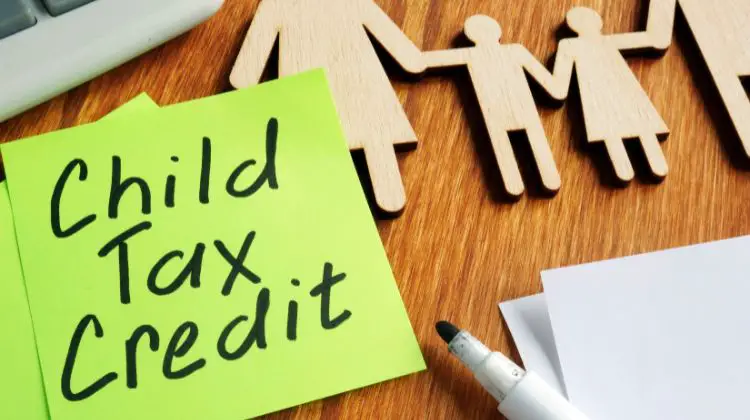Feeling overwhelmed by mounting debts? You’re not alone. Many people, from young families to retirees, find themselves buried under credit card bills, student loans, and other financial obligations. So, how do debt relief programs work to give you a lifeline?
Debt relief programs offer different solutions like consolidation loans or settlement plans tailored to ease your burden. They aim to reduce interest rates and lower monthly payments while helping you regain control of your finances.
Table of Contents:
- What Are Debt Relief Programs
- How Debt Settlement Works
- Understanding Debt Consolidation
- The Role of Credit Counseling in Debt Relief
- Exploring Debt Management Plans
- The Impact of Debt Relief on Credit Scores
- Choosing the Right Debt Relief Company
- Alternatives to Debt Relief Programs
What Are Debt Relief Programs
If you’re drowning in debt, you’re not alone. In fact, according to a recent study by the Federal Reserve Bank of New York, the total household debt in the United States reached a staggering $17.69 trillion as of the first quarter in 2024.
That’s a lot of zeros. And a lot of stress.
But here’s the good news: there are debt relief programs out there that can help you get back on track. These programs are designed to help you manage and pay off your debts in a way that works for your unique financial situation.
How debt relief programs work
Debt relief programs typically involve one of three solutions: a debt consolidation loan, a debt consolidation program, or a debt settlement program. Each solution is unique and geared toward a specific subset of borrowers, offering various ways to make debt repayment more manageable.
Types of debt relief programs
There are several types of debt relief programs available, including debt consolidation loans, debt consolidation programs, debt settlement programs, and credit counseling services. Each program has its own unique features and benefits designed to help borrowers manage and repay their debts more effectively.
Benefits of debt relief programs
Debt relief programs can offer numerous benefits to struggling borrowers, such as reducing interest rates, lowering monthly payments, simplifying repayment by combining multiple debts into one, and potentially settling debts for less than the full amount owed. These programs aim to make debt repayment more manageable and help borrowers regain financial stability.
Eligibility for debt relief programs
Eligibility for debt relief programs depends on factors such as the amount of debt owed, the borrower’s ability to repay, current interest rates, and potential fees associated with the program. It’s essential to carefully evaluate one’s financial situation and compare various debt relief options before choosing a program that best suits their needs.
How Debt Settlement Works
Debt settlement is a type of debt relief program that involves negotiating with creditors to reduce the amount of debt owed. It’s a popular option for those who are struggling to make their monthly payments and are looking for a way out.
Negotiating with creditors
Debt settlement involves negotiating with creditors to reduce the amount of debt owed, often resulting in paying less than the full balance. Debt relief companies typically handle these negotiations on behalf of their clients, working to reach agreements with creditors that are more manageable for the borrower.
Settling debts for less than owed
In a debt settlement program, the goal is to settle debts for less than the full amount owed. Debt relief companies negotiate with creditors to accept a lower payment as full satisfaction of the debt, which can significantly reduce the total amount the borrower must repay.
Risks of debt settlement
Debt settlement can have a negative impact on credit scores, with the National Foundation for Credit Counseling estimating a potential 100-point decrease. Additionally, debt relief companies may encourage clients to stop making payments on enrolled debts, which can lead to late fees, penalties, and legal action from creditors.
Fees associated with debt settlement
Debt relief programs typically charge fees ranging from 15% to 25% of the total amount of unsecured debt enrolled in the program. These fees can add to the overall cost of debt repayment and should be carefully considered when evaluating the potential benefits of a debt settlement program.
Understanding Debt Consolidation
Debt consolidation is another popular debt relief program that can help you get a handle on your debt. It involves combining multiple debts into one monthly payment, which can make it easier to manage your finances and pay off your debts faster.
Combining multiple debts into one payment
Debt consolidation involves combining multiple debts into a single, more manageable monthly payment. This can simplify the repayment process and potentially lower overall interest rates, making it easier for borrowers to stay on top of their debt obligations.
Types of debt consolidation loans
There are several types of debt consolidation loans available, including personal loans, balance transfer credit cards, and home equity loans. Each type of loan has its own unique features, interest rates, and repayment terms, so it’s essential to compare options and choose the one that best fits the borrower’s financial situation.
Pros and cons of debt consolidation
Debt consolidation can offer benefits such as simplifying repayment, potentially lowering interest rates, and improving credit scores by reducing credit utilization. However, it’s important to consider the potential drawbacks, such as the risk of accumulating more debt, the possibility of higher overall interest costs if repayment takes longer, and the need for good credit to qualify for favorable terms.
Qualifying for debt consolidation
Qualifying for debt consolidation typically requires a good credit score, as this can help borrowers secure more favorable interest rates and loan terms. Lenders will also consider factors such as income, debt-to-income ratio, and overall financial stability when evaluating a borrower’s eligibility for a debt consolidation loan.
The Role of Credit Counseling in Debt Relief
Credit counseling is a type of debt relief program that involves working with a certified credit counselor to assess your financial situation and develop a plan to pay off your debts. It’s a great option for those who need a little extra guidance and support in managing their finances.
How credit counseling works
Credit counseling involves working with a certified credit counselor to assess one’s financial situation, create a budget, and develop a personalized debt management plan. Credit counselors can provide guidance on managing finances, negotiating with creditors, and exploring various debt relief options.
Creating a debt management plan
A debt management plan (DMP) is a structured repayment program designed to help borrowers pay off their debts over a set period, typically 3-5 years. Credit counselors work with creditors to negotiate lower interest rates, waive fees, and create a single, affordable monthly payment for the borrower.
Benefits of credit counseling
Credit counseling can provide numerous benefits, such as helping borrowers gain a better understanding of their financial situation, developing essential money management skills, and creating a realistic plan to pay off debts. Credit counselors can also offer guidance on improving credit scores and communicating effectively with creditors.
Finding a reputable credit counseling agency
When seeking credit counseling services, it’s crucial to find a reputable, non-profit agency accredited by organizations such as the National Foundation for Credit Counseling (NFCC) or the Financial Counseling Association of America (FCAA). Researching an agency’s credentials, reading reviews, and asking about fees and services can help ensure a positive experience.
Key Takeaway:
Debt relief programs, like debt consolidation and settlement, can help you manage your debts. These options reduce interest rates or monthly payments and may settle for less than owed. But be cautious of potential fees and credit score impacts.
Exploring Debt Management Plans
When it comes to getting out of debt, a debt management plan (DMP) can be a real game-changer. I’ve seen it firsthand with friends who were drowning in credit card debt and feeling hopeless. But a DMP gave them a lifeline and a path forward.
How debt management plans work
Here’s the deal: in a DMP, a credit counseling agency works with your creditors to hammer out a more affordable monthly payment plan. You make one payment to the agency each month, and they distribute the funds to your various creditors. It simplifies the process and can take a lot of the stress out of juggling multiple bills.
Negotiating with creditors
The credit counselors go to bat for you, negotiating with creditors to lower interest rates, waive fees, and generally make your debt more manageable. They have the expertise and relationships with creditors to often get better terms than you could on your own. It’s like having a skilled negotiator in your corner.
Pros and cons of debt management plans
DMPs can be a fantastic tool, but they’re not without drawbacks. On the plus side, you can get lower interest rates, waived fees, and a more streamlined payment process. But DMPs typically take 3-5 years to complete, and not all creditors may agree to the terms. It can also impact your credit scores in the short term, but many see improvements over time as debts are paid down.
Fees associated with debt management plans
It’s important to know that DMPs aren’t free – credit counseling agencies typically charge a fee for their services. But these fees are regulated in most states and are generally pretty reasonable, especially compared to the money you can save through the program. Just make sure to ask about costs upfront so there are no surprises. A reputable agency will be transparent about their fees.
The Impact of Debt Relief on Credit Scores
One of the biggest concerns people have about debt relief is the impact on their credit. And it’s a valid worry – debt relief can definitely affect your credit scores, at least in the short term.
How debt relief affects credit scores
When you enroll in a debt relief program, your credit reports will show that your accounts are being managed by a third party. This can cause your scores to drop initially. Plus, if the program involves debt settlement, those settled accounts can stay on your credit report for up to seven years, which can also ding your scores. It’s not a fun reality, but it’s important to know what you’re getting into.
Short-term impact of debt relief on credit
In the short term, debt relief programs can definitely cause your credit scores to take a hit. Settled accounts, late payments, and the fact that you’re not paying your full balances can all have a negative impact on your credit. It’s a bitter pill to swallow, but sometimes it’s necessary to get your debt under control. Just know that it’s usually temporary and that you can rebuild.
Long-term impact of debt relief on credit
Here’s the good news: while debt relief can hurt your credit in the short term, the long-term impact is often positive. As you pay down and eliminate your debts through the program, your credit scores can start to recover and even improve. It’s a process, and it takes time, but I’ve seen people’s scores rebound in a big way after completing a debt relief program. The key is to stay disciplined and committed to the process.
Rebuilding credit after debt relief
Speaking of discipline, rebuilding your credit after debt relief is crucial. It involves things like:
- Making all your payments on time, every time
- Keeping your credit balances low
- Being cautious about taking on new debt
- Monitoring your credit reports for errors or inaccuracies
It’s not always easy, but it’s so worth it. Seeing your scores climb back up is incredibly rewarding and empowering. Trust me, I’ve been there.
Choosing the Right Debt Relief Company
If you’re considering debt relief, choosing the right company is absolutely essential. The wrong choice can be costly and even devastating.
Researching debt relief companies
When you’re looking for a debt relief company, research is your best friend. Check their track record, read reviews, and make sure they’re licensed and accredited. The FTC has some great tips on what to look for and what to avoid. Don’t just go with the first company you find – take your time and do your homework.
Red flags to watch out for
There are some major red flags to watch out for when choosing a debt relief company:
- Promises of guaranteed results
- Upfront fees before any services are provided
- Pressure to sign up immediately
- Lack of transparency about costs and services
- Advice to stop communicating with creditors
If a company is exhibiting any of these behaviors, run the other way. A reputable debt relief company will be upfront, transparent, and focused on your best interests.
Questions to ask before choosing a debt relief company
When you’re interviewing potential debt relief companies, come armed with questions. Ask about their fees, success rates, and average program length. Find out how they communicate with clients and how often you can expect updates. Ask if they’re licensed and accredited, and by whom. And don’t be afraid to ask for references or testimonials from past clients. A good company will be happy to provide them.
Accreditation and certifications to look for
When it comes to accreditation, look for companies that are certified by organizations like the American Fair Credit Council or the International Association of Professional Debt Arbitrators. These certifications mean the company adheres to strict standards and best practices. It’s an extra layer of protection and peace of mind for you as the consumer.
Alternatives to Debt Relief Programs
While debt relief programs can be incredibly helpful, they’re not the only option. There are some alternatives worth considering, depending on your situation.
Using personal loans to pay off debt
One option is taking out a personal loan to consolidate your debt. If you can qualify for a loan with a lower interest rate than your current debts, you could save money and simplify your payments by consolidating everything into one monthly bill. It’s not always easy to qualify for a low-rate personal loan, especially if your credit is already struggling. But it’s an avenue worth exploring, particularly if you have good credit.
Balance transfer credit cards
Another potential option is a balance transfer credit card. These cards often come with a 0% introductory APR for a set period, allowing you to transfer your high-interest balances and pay them down without accruing more interest. The key is to be diligent about paying off the balance before the intro period ends and the regular APR kicks in. It’s also important to read the fine print and watch out for balance transfer fees.
Negotiating with creditors directly
In some cases, you may be able to negotiate with your creditors directly to lower your interest rates or payments. It’s not always easy, and it takes some persistence and persuasion, but it can be done. The key is to be honest about your situation and to come prepared with a realistic proposal. Creditors may be willing to work with you if they believe it’s in their best interest and if you’re committed to paying what you can.
Creating a budget and repayment plan
Finally, sometimes the best solution is the simplest: creating a budget and a repayment plan. This involves taking a hard look at your income and expenses, finding areas to cut back, and allocating as much money as possible toward your debts. There are different approaches, like the debt snowball (paying off the smallest debts first) or the debt avalanche (focusing on the debts with the highest interest rates). The key is to find a plan that works for you and to stick with it. It’s not always easy, and it takes discipline and sacrifice. But the freedom and peace of mind that comes with being debt-free is absolutely priceless.
Key Takeaway:
Debt management plans simplify debt repayment by consolidating multiple payments into one. Credit counselors negotiate with creditors to lower interest rates and fees, but it can take 3-5 years to complete. Fees apply, so ask about costs upfront.







